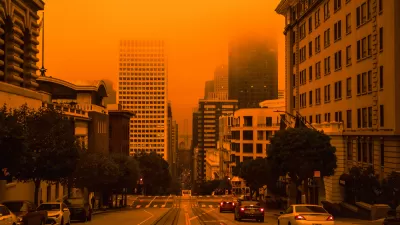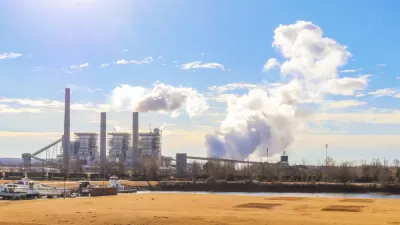A region known more for carbon emissions strives to create a carbon-neutral city powered by renewable energy and designed to reduce overall energy demand.
"Construction is under way on what is being called the world's first carbon-neutral city, rising from a featureless sandy expanse near the Abu Dhabi airport. Green as the city is intended to be, some environmentalists have criticized the project for deflecting attention from ongoing unsustainable development in a region with few natural resources aside from oil.
The city called Masdar, Arabic for "source," will have 40,000 residents and be powered exclusively by the sun, wind and heat stored in the earth.
Project leaders are relying on future "green" innovations -- what project manager Amer Battikhi calls "jumps in technologies" -- to make the goal possible. For that reason, many of the solar fields planned for the city will be built near the end of the eight-year project.
A 10-megawatt solar farm was built first, however, to generate power for the first phase of construction. Planners are also using recycled steel and recycled concrete and hope to recycle and reuse all construction waste. Waste that can't be recycled is being collected in hopes that future technologies will allow it to be recycled.
Much of the city is being constructed on a platform, or pedestal. Above the pedestal will be pedestrian streets and a dense mix of businesses and homes. Below the pedestal, a fleet of nearly 3,000 electric vehicles called "personal rapid transit" pods will carry residents and visitors through the city.
Traditional cars will be barred from entering Masdar. Light rail will connect the city with the carbon-emitting world.
Water will be produced by solar-powered desalination and will be reused for irrigation. Even the dew will be collected for use."
FULL STORY: Oil-rich, high-living gulf nation creating first carbon-neutral city

Study: Maui’s Plan to Convert Vacation Rentals to Long-Term Housing Could Cause Nearly $1 Billion Economic Loss
The plan would reduce visitor accommodation by 25,% resulting in 1,900 jobs lost.

North Texas Transit Leaders Tout Benefits of TOD for Growing Region
At a summit focused on transit-oriented development, policymakers discussed how North Texas’ expanded light rail system can serve as a tool for economic growth.

Why Should We Subsidize Public Transportation?
Many public transit agencies face financial stress due to rising costs, declining fare revenue, and declining subsidies. Transit advocates must provide a strong business case for increasing public transit funding.

How to Make US Trains Faster
Changes to boarding platforms and a switch to electric trains could improve U.S. passenger rail service without the added cost of high-speed rail.

Columbia’s Revitalized ‘Loop’ Is a Hub for Local Entrepreneurs
A focus on small businesses is helping a commercial corridor in Columbia, Missouri thrive.

Invasive Insect Threatens Minnesota’s Ash Forests
The Emerald Ash Borer is a rapidly spreading invasive pest threatening Minnesota’s ash trees, and homeowners are encouraged to plant diverse replacement species, avoid moving ash firewood, and monitor for signs of infestation.
Urban Design for Planners 1: Software Tools
This six-course series explores essential urban design concepts using open source software and equips planners with the tools they need to participate fully in the urban design process.
Planning for Universal Design
Learn the tools for implementing Universal Design in planning regulations.
Ascent Environmental
Borough of Carlisle
Institute for Housing and Urban Development Studies (IHS)
City of Grandview
Harvard GSD Executive Education
Toledo-Lucas County Plan Commissions
Salt Lake City
NYU Wagner Graduate School of Public Service





























